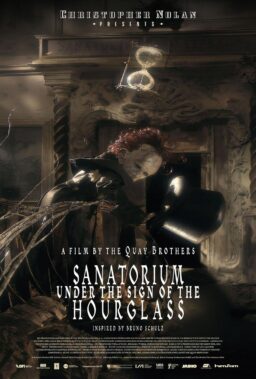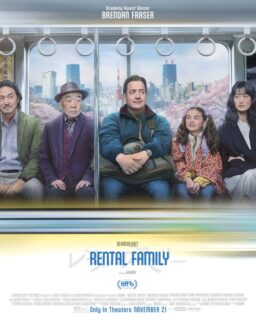CANNES, France — Here, in a nutshell, is the dream of every young movie director in America:
Obtain $800 digital camcorder at Circuit City.
Shoot feature film on $20,000 budget.
Save on cost of cinematography by training actors to operate cameras themselves.
Enter film at Sundance, where it generates biggest buzz. Festival forced to schedule extra screenings to accommodate demand.
Weigh many distribution offers; accept best one.
Fly to Cannes, where film is screened in the Directors’ Fortnight.
Sit on terrace overlooking gardens of Grand Hotel, giving interviews about your vision, release strategy, next project, etc.
Edwardo Sanchez and Daniel Myrich are, as they say, living that dream. They wrote and directed “The Blair Witch Project,” a horror film that opens in mid-July. It is already the third most-buzzed about film of the summer, after “Star Wars — Episode I: The Phantom Menace” and “Eyes Wide Shut,” and may move into second place by mid-June.
I saw the movie in January. It was screened Wednesday at Cannes. It is not easily forgotten. It begins with the announcement that three young documentary filmmakers ventured into the woods in search of a legendary witch. “Two years later,” we are told, “their footage was found.”
The movie consists entirely of what purports to be the actual footage of the doomed documentary. Sanchez and Myrich obtained a Hi-8 camcorder and a lightweight 16mm film camera, gave them to three actors and sent them off into the woods. Literally.
Until I talked with them here, I didn’t realize how cleverly the film’s footage was devised. I imagined a traditional shoot, in which the crew followed the actors through the woods, clicking off shots from the script.
Not at all. “We tried to stage the experience so they were having it while they were shooting it,” Sanchez told me. “For example, we showed our actress a house and told her this was where she lived, this was her room, blah-blah. We told her to be ready to leave home at a given time. On schedule, the other two actors arrived. They all started filming everything. They went to a restaurant for breakfast. Some of the customers and waitresses were planted by us, but they didn’t know which ones. Then we told the actress to make some notes for her little speech explaining the mission to these two guys she had recruited as her crew.”
We see all of that happening, as it’s shown spliced together from hand-held footage from the two cameras. Then the three documentary-makers venture off into the woods.
“We followed them at a distance,” Myrich said. “We gave them (directional) devices so they could find their locations. At certain times, they were supposed to find checkpoints, with fresh batteries for the cameras, and instructions on what to do next. And they were just supposed to film everything.”
One night after they pitch their tent and go to sleep, they’re awakened at 3 a.m. by strange noises. The cameras click on in the darkness, and then flashlights illuminate their frightened faces.
“The noise was us,” Sanchez and Myrich told me. “We were rustling around in the leaves outside the tent.”
Because every single shot in the movie is shot unrehearsed, cinema-verite style, it has such a convincing documentary look that some audiences think the film has to be for real.
“In most horror films,” Myrich said, “you know it’s not real because the camera knows where to look before the scary thing happens. In this film, the camera is always a little late, swinging around to catch something that has already started happening.”
What were their influences? “Classic horror that really scares you, like ‘The Exorcist,’ ” Sanchez said. “And movies where they go looking for something legendary, like `In Search of Bigfoot,’ ” Myrich said. “You know, Bigfoot probably does exist.`’
The legendary German director Werner Herzog arrived here with a real documentary scarcely less scary than “Blair Witch.” Titled “My Best Fiend,” it’s the story of his relationship with the actor Klaus Kinski, whose towering rages held crews and directors in a reign of terror – except for Herzog.
The title – “fiend,” not “friend” – is a pun on their love-hate relationship. Herzog became convinced as a boy that it was his destiny to direct Kinski in a film. Kinski actually lived under the same roof with Herzog, his mother and his four siblings for several months, on one occasion locking himself into the bathroom for two days and reducing every single porcelain fixture “to grains the size of sand.”
Kinski starred for Herzog in “Aguirre, the Wrath of God,” “Fitzcarraldo,” “Nosferatu the Vampyre,” “Woyzeck” and “Cobra Verde” (in which he ran wild inside a mob of hundreds of naked, spear-wielding warrior Amazons). When the actor threatened to walk off one of Herzog’s difficult locations in the Peruvian rain forest, the director told him, “I have eight bullets in this gun. If you leave, by the time you reach that river bend, you will have seven bullets in your head, and the eighth one is for me.”
Ha! says Kinski in his autobiography – it is a lie, because he had the gun, not Herzog. Ha! says Herzog in his film. Kinski knew his autobiography would not sell unless he said shocking things, so Herzog helped him use the dictionary to look up vile words he could use in describing the director.
So much did the Indians of the Amazon hate Kinski, Herzog claims, that one day they approached him with an offer to kill the actor. “I needed Kinski for a few more shots, so I turned them down,” Herzog said. “I have always regretted that I lost that opportunity.” Is he kidding? Sure.
For years, every Cannes official screening has opened with an elegant logo showing a staircase climbing up out of the sea and reaching to the stars. This year, alas, the classic simplicity has been replaced by a hideous new design, in which a multifaceted zirconium tree ornament zigzags up a staircase while shedding digital debris. If it works, don’t fix it.










